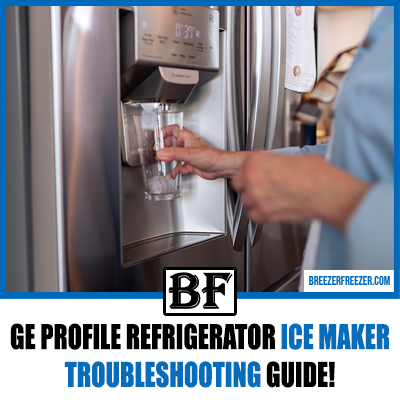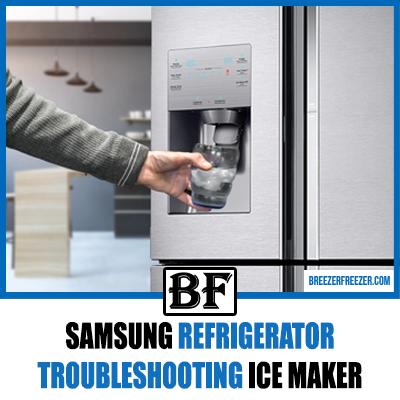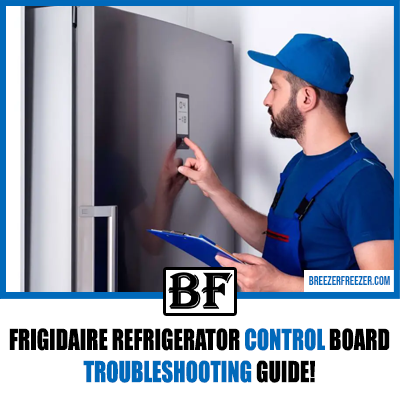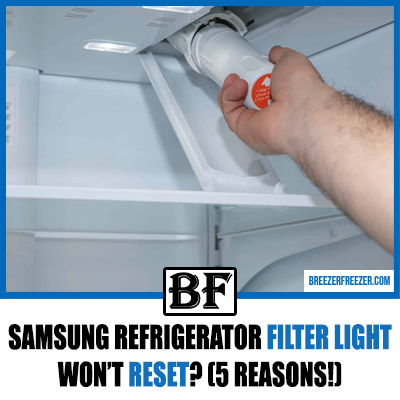Samsung Refrigerator Water Dispenser Not Working After Replacing Filter
If you have recently replaced the filter indicator on your Samsung refrigerator and are experiencing issues with the water dispenser, there could be several reasons behind it.

These include using a counterfeit or incorrectly fitted filter, using the wrong type of filter, or receiving a defective filter. Alternatively, the problem may be caused by a locked control panel, a frozen tank, a water supply failure, trapped air in the system, or a faulty switch.
To address these possibilities, let’s explore at least nine potential issues, beginning with the filter itself. Samsung recommends trying DIY troubleshooting before reaching out to their technical service team, and they provide helpful guides for this purpose. With a positive outlook, this troubleshooting guide aims to assist you in resolving the problem and restoring your water dispenser to its normal functioning.
However, before delving into the troubleshooting process, let’s first understand the importance of filter replacement and when it should be considered.
If you’re in a hurry, here’s a quick troubleshooting guide to help you resolve the issue with your Samsung refrigerator water dispenser after replacing the filter.
| Probable Cause | DIY Fix |
| Fake/Non-Genuine Filter | Only buy a genuine Samsung water filter. Use your older filter as a guide for finding a replacement. |
| Incorrect Filter Installation | Follow the accompanying filter instructions to install the filter the right way. |
| Incorrect Filter Type | Match the replacement filter with the original model. |
| Defective Filter | Replace the new filter if it appears faulty. |
| Locked Control Panel | Check for possible active Child Lock, Control Lock or Dispenser Lock and deactivate them. |
| Freezing Water Tank | De-thaw the water tank if icy and adjust the freezer’s temperature to about 0-10°F. |
| Water Supply Failure | Look for a fault in the water supply line and fix it to improve the water supply to the dispenser. |
| Trapped Air in the Water Line | Flush out trapped air from the water line by running some water down the dispenser. |
| Faulty Dispenser/ Door Switch | Replace whichever switch is faulty. |
Why It’s Important to Replace the Water Filter in Your Samsung Refrigerator and When to Do It
Replacing the water filter in your Samsung refrigerator is crucial if you want to ensure that you are consuming the cleanest and safest water from your fridge dispenser.
Over time, the filter accumulates dirt, microbes, and debris, which can result in a clogged filter. While a clogged filter may still function, it often leads to the failure of the water dispenser.
To prevent this, Samsung refrigerators have an indicator that alerts you when it’s time to replace the filter. Typically, the indicator shows blue or green when the filter is still safe to use, orange when it’s nearing replacement time, and red when it’s clogged and no longer safe to use.
The filter indicator usually takes around 5-6 months to turn orange or red, indicating the need for a replacement. After replacing the filter, you would expect the filter light to reset and the water dispenser to resume normal operation.
However, if your Samsung refrigerator’s filter light doesn’t reset or the water dispenser still doesn’t work after replacing the filter, there are several potential explanations to consider.
Here are nine possible causes for a Samsung refrigerator water dispenser not working after replacing the filter:
The Filter Could Be Fake or Non-Genuine
Using counterfeit or non-genuine Samsung water filters can lead to poor performance. To ensure optimal functioning of the water and ice dispenser, it’s essential to use genuine Samsung filters.
Solution: Check if your old filter matches the replacement. If not, it may be a fake filter. Look for the exact replacement from the manufacturer’s website or reputable sources.
The Filter Could Be Incorrectly Installed
If the Samsung refrigerator water filter is not installed correctly, it may result in the failure of the filter and subsequently, the water dispenser.
Solution: Follow the installation instructions provided by Samsung for your specific refrigerator model. Remove the old filter, insert the new one properly, and ensure it is securely locked into position.
The Filter Could Be the Wrong Type
Samsung offers different types of water filters for their refrigerators. Using the wrong type of filter can prevent proper fitting and cause the water dispenser to malfunction.
Solution: Check your old Samsung filter to identify the exact type and find a replacement that matches it.
The Filter Could Be Defective
Mishandling or applying excessive force during installation can damage the water filter, resulting in a faulty filter that hinders the water dispenser’s operation.
Solution: Inspect the filter’s housing, valve stem, and cap for any damage. If any part appears damaged, replace the entire filter.
Check for a Locked Control Panel
Samsung refrigerators have control panel lock features that can inadvertently disable the water dispenser. Control Lock, Child Lock, or Dispenser Lock may be activated, preventing the dispenser from working.
Solution: Deactivate the control lock or child lock by pressing the appropriate buttons on the control panel. For Dispenser Lock, unlock it through the settings on the Family-Hub control panel.
The Water Tank Could Be Freezing
Extremely low temperatures in the freezer can cause the water tank to freeze, leading to insufficient water supply to the dispenser and resulting in its failure.
Solution: Check and adjust the freezer temperature if it’s below 0°F. Allow the unit to naturally thaw, which will unfreeze the water tank.
Possible Water Supply Failure
A functioning water dispenser requires a sufficient water supply. Interruptions in the water supply can cause the dispenser to stop working.
Solution: Ensure that the water supply line is connected and turned on. Check for any frozen water tubes and thaw them if necessary. Test the water inlet valve for any malfunctions and replace it if needed. Verify that the water pressure is adequate.
Trapped Air in the Water Line
During the filter replacement process, it’s possible for air to become trapped in the water line, leading to a blockage and preventing the water dispenser from functioning properly.
Solution: To address this issue, it’s important to flush the air out of the water line. Simply place a container under the water dispenser and wait for water to flow. It may take a few minutes, but if the filter is not faulty, the water should eventually start flowing.
Defective Dispenser On Door Switch
The dispenser on the door and the refrigerator’s door switch play a crucial role in the operation of the water dispenser. If either of these switches breaks or malfunctions, it can result in the water dispenser not working.
Solution: Use a multimeter to test the continuity of the dispenser and door switch. If either of them fails to show continuity, it is recommended to replace the defective switch.
Additional Information
Here are some commonly asked questions related to Samsung refrigerator water dispensers:
How Do I Reset My Samsung Refrigerator After Changing the Water Filter?
To reset your Samsung refrigerator after changing the water filter, refer to your specific refrigerator model’s instructions. Typically, you can reset it by pressing buttons such as ‘Filter Reset,’ ‘Ice Type + Child Lock,’ ‘Fridge Manager,’ or ‘Reset Water Filter’ on the control panel.
Why Is Water Not Coming Out of My Samsung Refrigerator?
If water is not coming out of your Samsung refrigerator, there are several potential reasons. It could be due to a faulty, clogged, or incorrectly installed filter. Other possible causes include a defective inlet valve, a blocked water line, or low water pressure.
How Do You Reset a Samsung Water Dispenser?
To reset a Samsung water dispenser, hold down the water switch on the control panel of the unit until the filter light turns blue or green.
In conclusion
If your Samsung refrigerator water dispenser is not working after replacing the filter, it’s possible that the new filter is the wrong type, non-genuine, faulty, or improperly installed. However, don’t forget to also check for other potential issues such as water supply failure, a freezing water tank, trapped air, a faulty switch, or a locked control panel.





![Why Is My Freezer Making a Loud Humming Noise? [Solved!]](https://breezerfreezer.com/wp-content/uploads/2023/10/Why-Is-My-Freezer-Making-a-Loud-Humming-Noise.png)